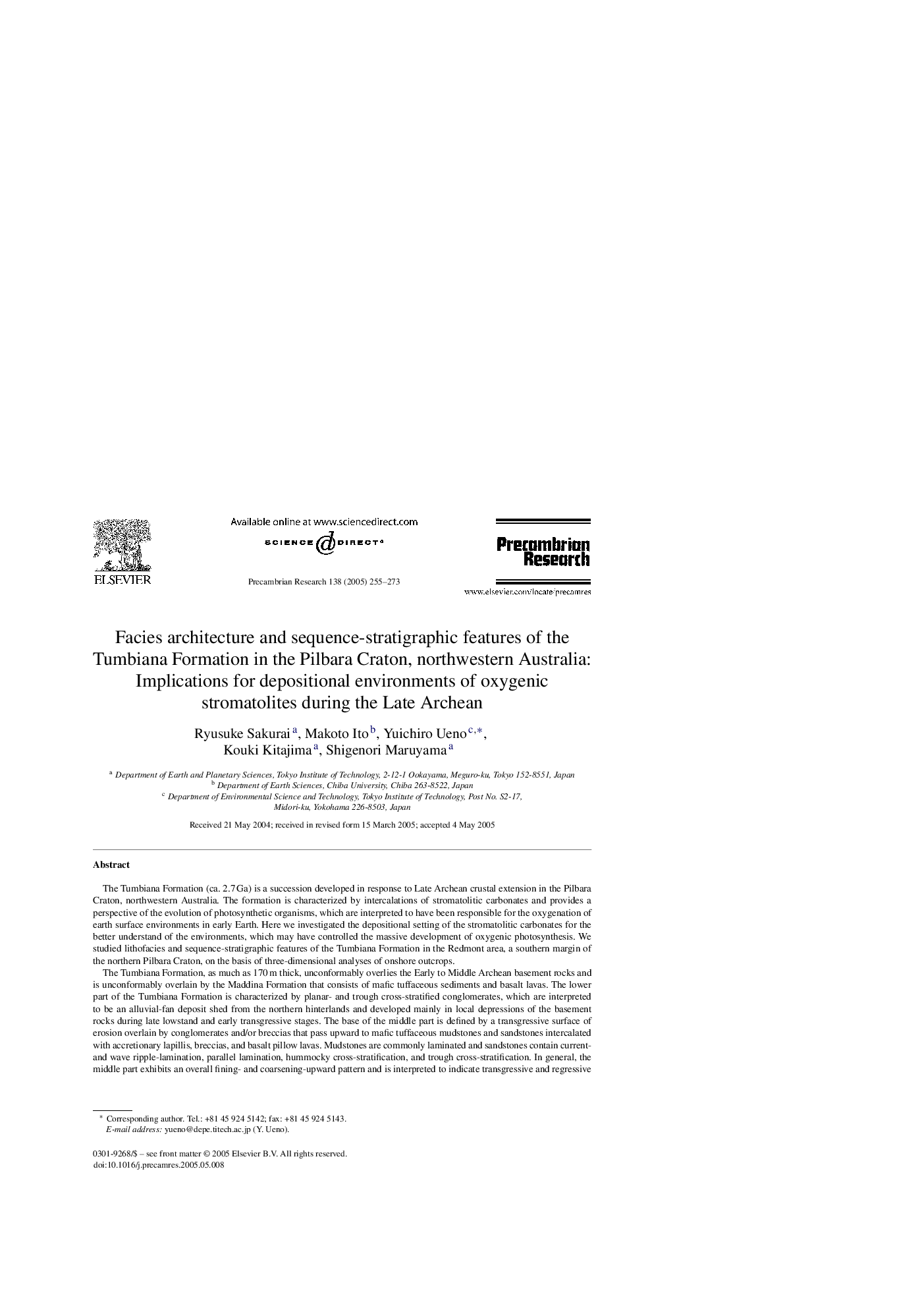| کد مقاله | کد نشریه | سال انتشار | مقاله انگلیسی | نسخه تمام متن |
|---|---|---|---|---|
| 9533809 | 1639751 | 2005 | 19 صفحه PDF | دانلود رایگان |
عنوان انگلیسی مقاله ISI
Facies architecture and sequence-stratigraphic features of the Tumbiana Formation in the Pilbara Craton, northwestern Australia: Implications for depositional environments of oxygenic stromatolites during the Late Archean
دانلود مقاله + سفارش ترجمه
دانلود مقاله ISI انگلیسی
رایگان برای ایرانیان
کلمات کلیدی
موضوعات مرتبط
مهندسی و علوم پایه
علوم زمین و سیارات
ژئوشیمی و پترولوژی
پیش نمایش صفحه اول مقاله

چکیده انگلیسی
The Tumbiana Formation, as much as 170Â m thick, unconformably overlies the Early to Middle Archean basement rocks and is unconformably overlain by the Maddina Formation that consists of mafic tuffaceous sediments and basalt lavas. The lower part of the Tumbiana Formation is characterized by planar- and trough cross-stratified conglomerates, which are interpreted to be an alluvial-fan deposit shed from the northern hinterlands and developed mainly in local depressions of the basement rocks during late lowstand and early transgressive stages. The base of the middle part is defined by a transgressive surface of erosion overlain by conglomerates and/or breccias that pass upward to mafic tuffaceous mudstones and sandstones intercalated with accretionary lapillis, breccias, and basalt pillow lavas. Mudstones are commonly laminated and sandstones contain current- and wave ripple-lamination, parallel lamination, hummocky cross-stratification, and trough cross-stratification. In general, the middle part exhibits an overall fining- and coarsening-upward pattern and is interpreted to indicate transgressive and regressive shelf-to-coastal lithofacies successions. In particular, the uppermost horizon of the middle part is characterized by sandstone beds with herringbone structures and desiccation cracks, and is interpreted to indicate an intertidal deposit developed during late highstand and/or following falling stages. The middle part of the formation, in general, thickens to the northern proximal area and eventually flattened out the topographic irregularity of the basement rocks. The upper part is characterized by stromatolitic carbonates, associated with minor mudstones and wave- and current-rippled sandstones, and does not exhibit distinct lateral variation in thickness and vertical lithofacies organization. The base of the upper part is characterized by a transgressive lag deposit. The ensuing transgression over the intertidal deposits of the uppermost middle part is interpreted to have developed a new accommodation space for the vertical stacking of stromatolites with different external shapes from elongated small-domal- and columnar-types associated with desiccation cracks to stratiform- and large domal-types. These changes may have responded to the increase in paleowater depth possibly from intertidal to subtidal environments. In conclusion, stromatolites in the upper Tumbiana Formation in the Redmont area are interpreted to have developed in coastal and shallow marine environments in response to the rise in relative sea level rather than in ephemeral saline lakes as proposed by previous studies. However, the outcome of the present research does not necessarily deny the previously proposed interpretation but suggests spatial variations in depositional environments of the Tumbiana Formation from the north to south.
ناشر
Database: Elsevier - ScienceDirect (ساینس دایرکت)
Journal: Precambrian Research - Volume 138, Issues 3â4, 9 August 2005, Pages 255-273
Journal: Precambrian Research - Volume 138, Issues 3â4, 9 August 2005, Pages 255-273
نویسندگان
Ryusuke Sakurai, Makoto Ito, Yuichiro Ueno, Kouki Kitajima, Shigenori Maruyama,